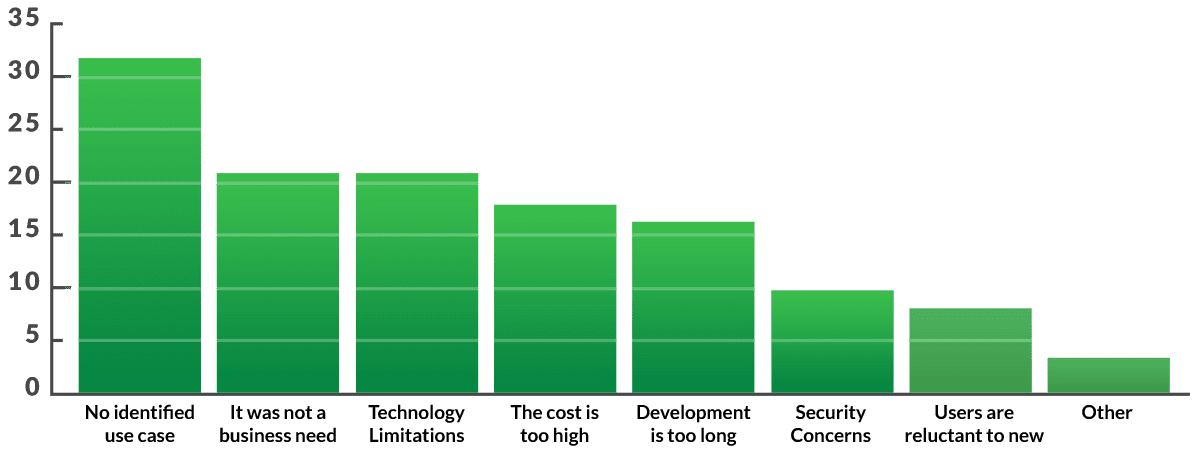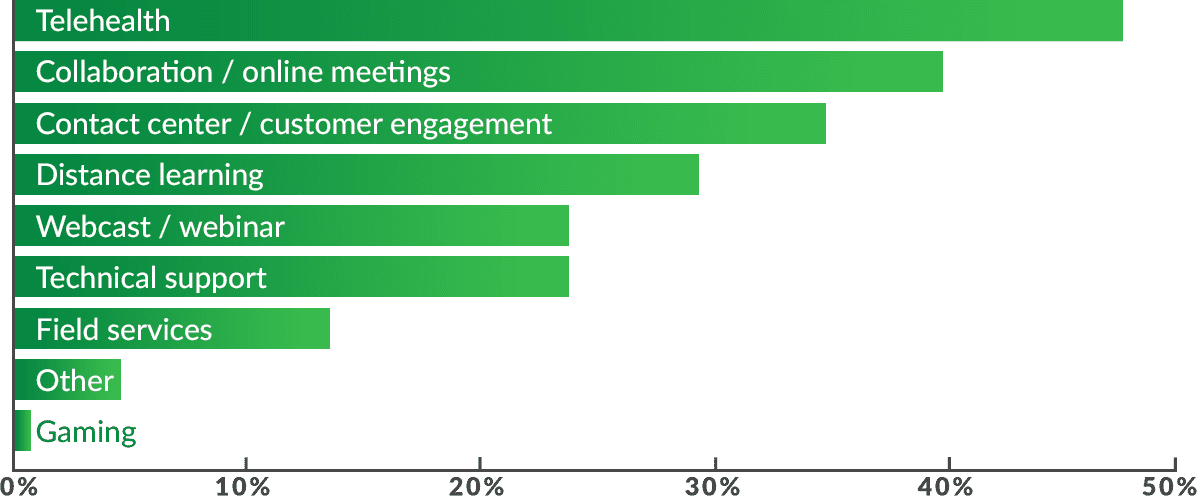Let’s meet face-to-face: embedded video trends and the IoT
The invention of the Lumiere brothers gave humankind a magic. Since that time, the magic has been evolving along with the rapid technological development of the XX century. In these days, the always-connected global population appreciates a lot the final stage of the Lumiere brothers’ magic – the streaming video making time and space irrelevant for the people who can communicate remotely face-to-face.
Communication matters most
Whatever opinions regarding the main function of the internet may exist, its communication capability remains crucial for the users of numerous digital devices. The accelerating pace of the contemporary life requires real-time solutions for communication. The reliability of decisions in a broad variety of situations implies the actual evidence when “better once to see than hundred times to hear”. Live chats, webinars and video conferences are occupying more and more areas of human activities. Today, the question is not about to use video facilities in a business or not. The question is how to embed video capabilities into a business application more efficiently. The feasibility of the various video solutions is the issue needed to be figured out depending on who, where, and for what is to use video.
Figure1: What has prevented you from using embedded real-time video communication so far?

Vidyo’s report in search of insights
Being one of the world-famous vendors of the embedded video software, Vidyo company has released a special report based on the survey conducted among 166 developers from 48 countries. The report covers numerous aspects of the current trend of enabling applications with integrated video facilities. Indeema, as a business partner of Vidyo, is going to share some critical findings concerning the data represented in the report. Once Indeema is a professional software developer currently focused on the Internet of Things, the insights appeared after searching the report of Vydio can hopefully demonstrate a wide audience how closely the integrated video technology comes to the IoT.
Peer-to-peer implies video
The collaboration and engagement constitute probably the main initiatives pushing various organizations from big corporations to small startups to integrate real-time video into their business applications. Being able to reach customers remotely, businesses take advantages of the instant face-to-face communication when the urgent and sophisticated questions can be solved in the most efficient manner. The actual presence of customers is traditionally important for banking, healthcare, and education where the client identification along with the peer-to-peer collaboration is crucial.
Customization rules
However, the more the global market evolves, the better personalization is required from brands by their customers. The e-commerce retailers who arrange the advanced customer care have much better chances to compete in the market catching and holding the consumers’ attention with highly customized approaches. An affable sales consultant appearing in a live video chat can be hundred times more influential on the customers than the most expensive and luxury storefronts and shop facilities.
By the way, the latest iPhone X fascinating global public with the face recognition capabilities follows indirectly the trend of the peer-to-peer relationships occupying the entire digital environment. And the embedded video goes in line with the trend.
Recognizing video potentialities in the IoT
It is instructive that besides the widely accepted devices associated mostly with video services, the respondents of the Vidyo’s survey indicated some other unusual areas and gadgets where the real-time video capabilities are going to be embedded. Along with web browsers, PCs and mobile phones, such “exotic carriers” of video service as drones, smart glasses, and vending machines are considered by the developers within the IoT, gaming, and retail sectors respectively. Of course, the overwhelming majority of the currently developed video applications belong to the web and mobile segments. Nevertheless, the very fact that developers started recognizing potentialities in the other business areas hints at the approaching expansion of the embedded video services.
Figure 2: What has prevented you from using embedded real-time video communication so far?

Broadcast yourself to your doctor
When it comes to the IoT, the broad variety of use cases where a real-time video is applicable can involve such sectors as healthcare, security, retail, and home appliances. A hospital bed equipped with a motion detector activating an embedded video communication facility can significantly improve both the nursing care for stretcher cases and communication between patients and the hospital staff. Such a hypothetical use case reflects the complementary synthesis of the IoT and video services.
Moreover, from the mere technical viewpoint, there is nothing critically difficult in developing such an IoT solution whatever customization it may require. The only significant tradeoff which can occur in such a case concerns the type of application where the video service can be embedded.
The app’s type is questionable
The statistics from the Vidyo’s report shows web apps as the most preferential choice of the respondents. However, it excludes neither mobile nor native apps depending on each particular case. And namely, the IoT software developer is responsible for the right choice the end customer is to make with regard to the feasibility of one type of the apps or another.
In fact, the right choice of the app types depends on many factors. The bandwidth or the quality of networks affects the considerations of the end users significantly in accordance with the report of Vidyo. More than a half of the respondents indicated just the technical limitations as the main concern preventing them from using embedded video in their applications. The low bandwidth can entail a bad user experience which is prohibitively unaffordable for many businesses. Besides, the vast variety of the users’ audience implies using different devices and operating systems that in many cases makes native apps hardly reasonable.
Devices vary
The right device issue relates to the sphere of the IoT quite closely since the customized solutions prevail in this area. It means that the video-empowered smart doorbells or drones for pizza delivery should have the appropriate hardware-software facilities allowing them to provide video communication with the common widely used devices such as PCs and mobile gadgets. The compatibility comes into play here and web browser-based solutions seem to be the universal method of connecting various distinct devices.
See-what-I-see
Nevertheless, the native apps should be considered when it comes to many narrow-specialized industrial implementations where in-field maintenance, for example, requires the “see-what-I-see” approaches. The construction helmets equipped with video cameras can transmit some real-time video content from the in-field construction staff to an engineering office where high-qualified specialists can estimate the extent of a particular technical problem without having to visit the remote construction site personally. Such a solution can be developed in the form of a custom native app working within the scope of tasks of a certain corporation. Even though it implies quite expensive tailor-made software, the economic benefits brought by the optimized time-saving workflows can compensate the development cost many times over.
When video raises prestige
The similar see-what-I-see solutions go in line with numerous cases in the telehealth, education, and customer care segments. Namely those three use cases are indicated by the Vidyo’s respondents as the top areas where embedded real-time video should be implemented. Sharing an experience through a live video conference is an efficient training method which can imply a personal approach to quite wide audiences. The medical students can watch what happens on the operating table in a real-time mode when a best-trained surgeon carries out a difficult operation wearing a smart glasses equipped with a camera. Such a training video content transmitted to various remote locations even at another continent can raise the prestige of the medical institution besides bringing practical benefits to the international students.
Grasping the value video can add
In general, the question of how real-time video capabilities can add value to a business is really fundamental, as the Vidyo’s report shows. Having quite a clear vision of how progressive is the real-time video technology, many business owners are trying to grasp the meaningful practical implementation of embedded video into their businesses. Besides the mere technical considerations, the quality-cost ratio impedes decision-making on the video technology to be prioritized. Many believe that they should arrange quite sophisticated infrastructure along with expensive data center’s hardware in order to provide the reliable connectivity and therefore the high-quality user experience. Often, it implies a significant investment as well as the organizational challenge of hiring skilled video specialists. Although such hesitations are justified and reasonable in many cases, the contemporary software development industry can offer several basic approaches to the embedded video options.
4 basic approaches to video integration
Four main approaches to the issue can be defined in the “build vs buy” alternative. In fact, only one of them belongs to what we call the software development. This approach implies the full custom development when the solution is created upon a specific request of the end customer for the internal corporate operation. Whatever type of apps it implies, the best flexibility along with the personalized functionality of the final solution inevitably entails the highest cost of development and maintenance. Besides, the entire infrastructure must be own-hosted.
The other three approaches offer the options to be purchased from outside one way or another. However, they are not equal in the cost-capabilities aspect. The commercial software available in the market offers quite a flexible customization as well as the advanced customer support in most cases. However, the expensive and time-consuming procedure of adoption along with the necessity to have the own infrastructure can offset the advantages of this option.
Another approach implies open source software which can be integrated either as-is or being quite significantly customized. In many cases, this variant is cost-saving that does not exclude the need to establish an own infrastructure, nevertheless.
And the third available option implies Communication Platform-as-a-Service (CPaaS) when embedded video capability is integrated through APIs. This approach outperforms the previous ones since the fully hosted service does not require establishing infrastructure. However, the flexibility of customization of the CPaaS is inferior to the other commercial “buy” variants, not to mention the “build” approach. Whether this feature of the CPaaS approach is crucial every particular end customer is to figure out. Especially since the other advantages such as almost zero video expertise required can represent decisive benefits.
Figure 3: Do you have plans to use video capabilities from a CPaaS in the future?

IoT + Video = 2018
Anyhow, the biggest part of businesses is going to implement embedded video capabilities in their applications in 2018, as Vidyo’s report indicates. It means that the general understanding of how video is attractive to users encourages business owners to apply the real-time video facilities whatever technical or organizational approaches it may require.
Once the Internet of Thing sector is evolving rapidly, the combination of video capabilities with the IoT solutions seems both promising and organically compatible in the sense of meeting the ethos of the 4th industrial revolution. And in order to achieve the true synthesis of the IoT and embedded video the right identification and involvement of such professionals as Indeema and Vidyo is worth applying.

